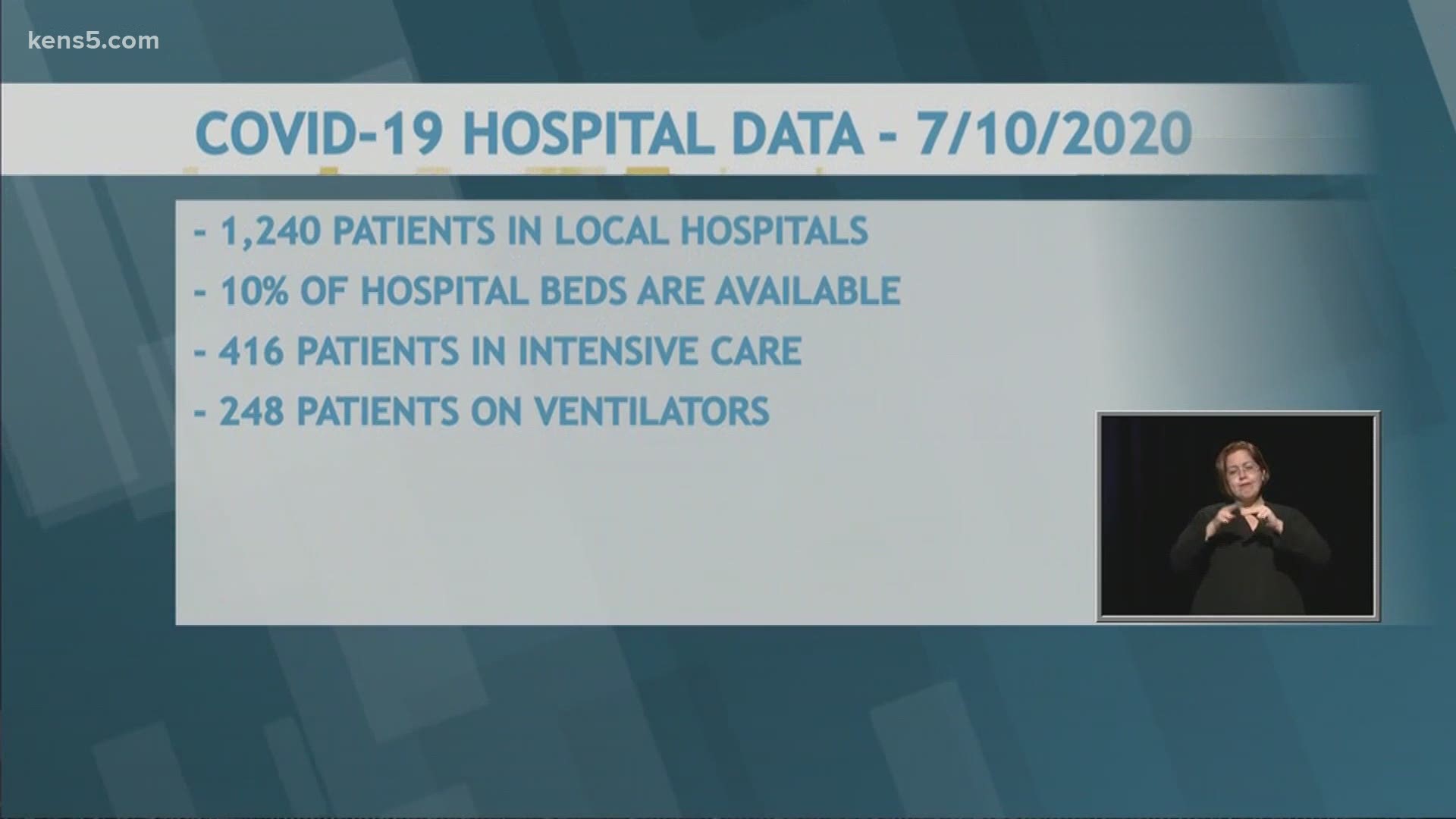SAN ANTONIO — We're tracking the latest numbers from the coronavirus pandemic in San Antonio and across Texas. Here are the latest numbers reported by Bexar and surrounding counties:
- Bexar County: 923 new cases and one fatality from COVID-19 were reported Friday. There have been a total of 18,602 cases and 166 virus-related fatalities in the county.
- Comal County: Comal County reported 37 new cases of coronavirus Saturday (bringing the total to 1,282) and one new COVID-19 related deaths. 22 people have now died in the county, while 458 have recovered. The positivity rate is 15.10%, up from 14.75% Friday and 12.67% one week ago.
- Hays County: The county reported 92 new lab-confirmed coronavirus cases Friday. As of July 10, the Hays County Local Health Department confirms a total of 3,501 cases in the county, 2,835 of which remain active. The county's death toll is 11.69 Hays County residents in total have been hospitalized with COVID-19, and 20 are still in the hospital.
Here are the full numbers for Bexar County. San Antonio Metro Health updates them at 7 p.m. daily.
How Bexar County is trending:
We're tracking how many coronavirus cases are confirmed in Bexar County each day from the time San Antonio Metro Health began reporting cases more than two months ago. Graphing those daily case numbers along a 14-day moving average provides an accurate picture of the curve in the San Antonio area and the direction we're heading amid the coronavirus.
On Friday, Mayor Ron Nirenberg reported 923 newly confirmed cases of coronavirus in Bexar County. The total number of cases in the San Antonio area now sits at 18,602, and the moving average of daily new cases continues to rise. Over 20% of the county's total cases were reported in the last week.

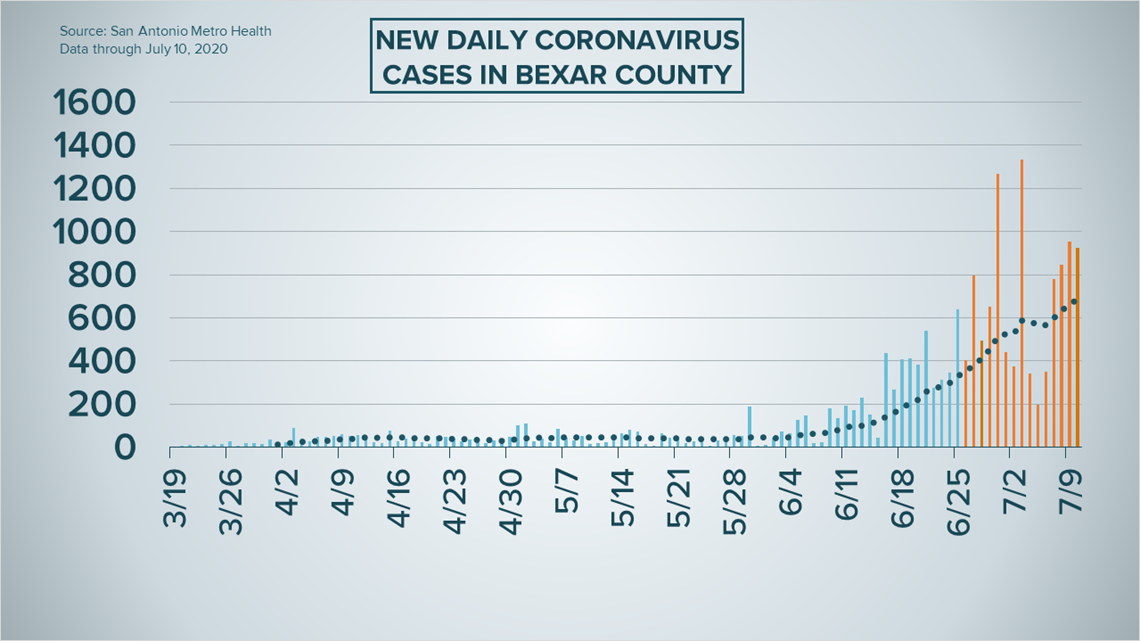
According to the mayor, 75% of county residents with coronavirus are Hispanic. He says people between the ages of 20 and 29 make up the largest portion of local cases, around 25%.
Additionally, the mayor reported that a boy in his teens has died in the county.
The number of patients in Bexar County hospitals rose to 1,240. The number of patients in ICU jumped to 416, and 248 patients are on ventilators. Both of those are new record highs. 10 percent of local hospital beds are available.

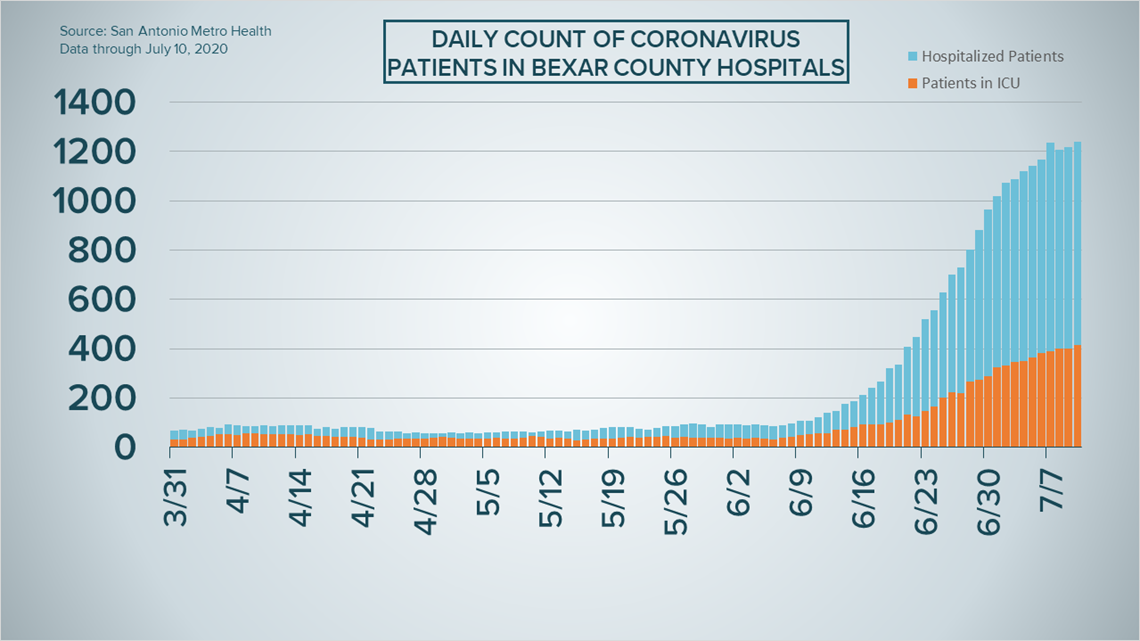
The mayor called on San Antonians who have survived coronavirus to donate convalescent plasma for the patients who are currently fighting. He said that hospitals went from requesting 5 bags of plasma per day to over 100.
Coronavirus in Texas
Texas passed 3,000 coronavirus deaths Friday as state officials reported 95 new fatalities, continuing an alarming trend. The past four days have brought the four highest 24-hour death tolls. 358 Texans have died in the past four days, which is about 12% of the 3,013 deaths so far.

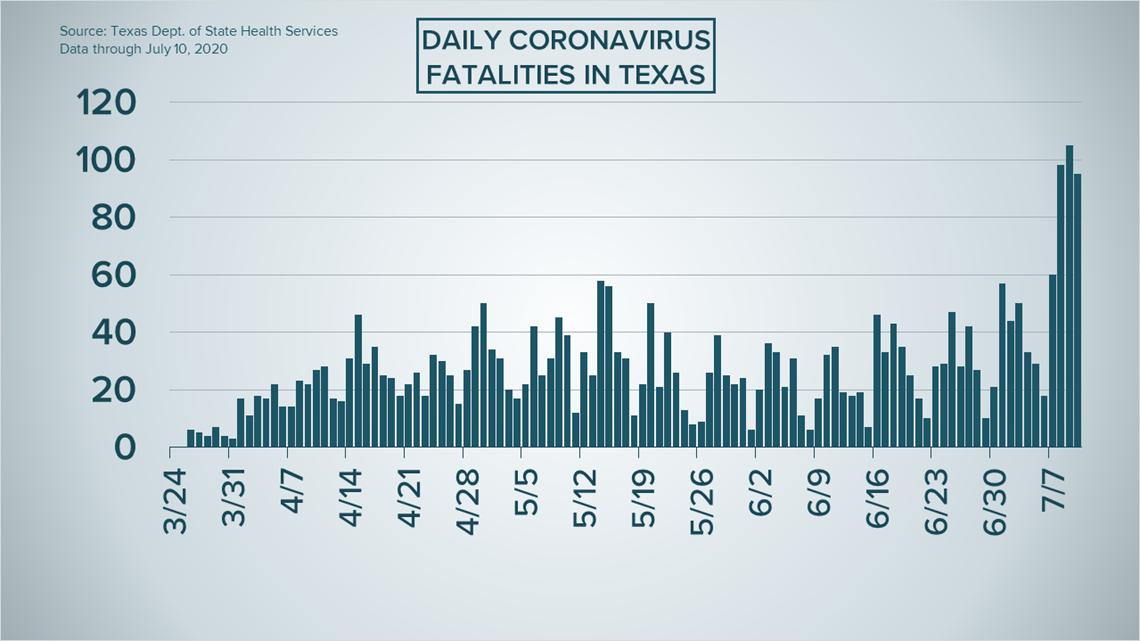
The number of total coronavirus cases in Texas grew by 9,765 Friday. This is the fourth-highest single-day increase, behind only the previous three days. Nearly 40,000 positive tests have come back in the past four days, which is over 16% of the total. 240,111 Texans have tested positive for coronavirus since the pandemic began earlier this year, and over 114,000 of those cases are active.

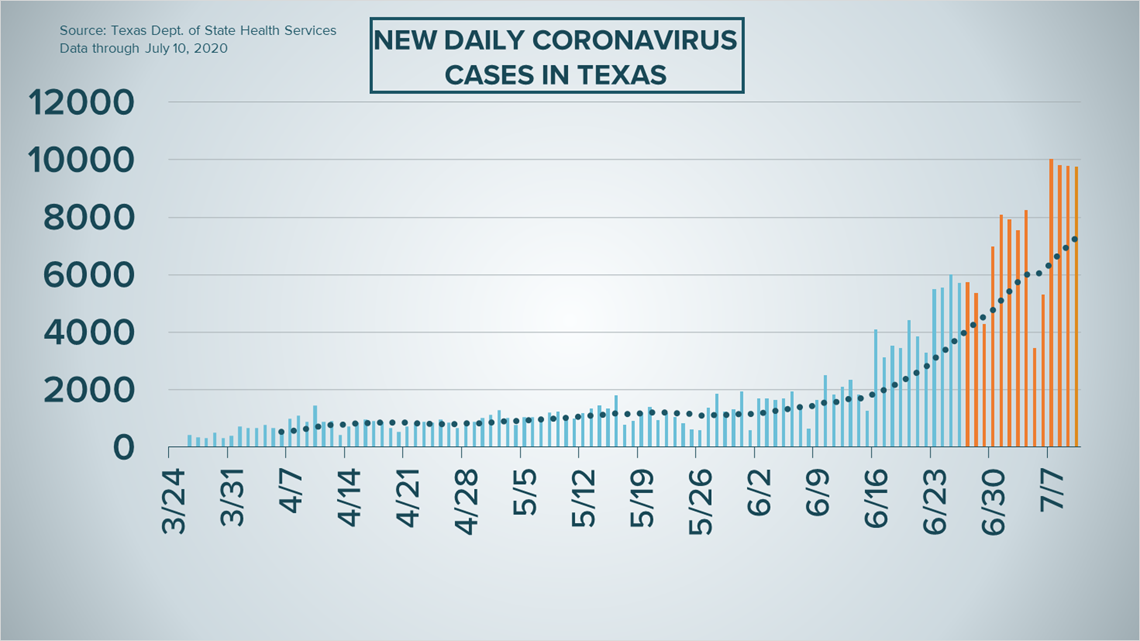
After almost a month of steady growth, there are now over 10,000 Texans in the hospital with coronavirus. Less than 1,000 of the 8,724 ICU beds across the state are available. In two weeks, the number of Texans in the hospital has doubled.
Latest Coronavirus Headlines
- Waiting for a negative coronavirus test result? Metro Health says after being infected, that could take weeks
- Corpus Christi officials report the COVID-19 related death of a six-week-old infant
- Would you like a side of PPE with your paleta? Local organizations team up to distribute both
- COVID-19 game-changer? Houston researchers create air filter that can kill the coronavirus
- Party’s over: Fiesta’s November reboot called off amid SA’s COVID-19 surge
- Gov. Greg Abbott extends disaster declaration for all Texas counties as COVID-19 cases continue to spike
- Gov. Abbott: Lack of masks, spike in COVID-19 could lead to 'necessity of closing Texas down'
- Why experts say COVID-19 death rate doesn't give full picture of current situation
- Surges in COVID-19 testing are leading to longer wait times in Texas, officials say
- American Academy of Pediatrics, cited by Trump, denounces school funding threat
Coronavirus symptoms
The symptoms of coronavirus can be similar to the flu or a bad cold. Symptoms include fever or chills, cough, shortness of breath or difficulty breathing, fatigue, muscle or body aches, headache, new loss of taste or smell sore throat, congestion or runny nose, nausea or vomiting and diarrhea, according to the Centers for Disease Control.
Most healthy people will have mild symptoms. A study of more than 72,000 patients by the Centers for Disease Control in China showed 80 percent of the cases there were mild.
But infections can cause pneumonia, severe acute respiratory syndrome, kidney failure, and even death, according to the World Health Organization. Older people with underlying health conditions are most at risk.
On June 25, the CDC expanded the list of groups at a higher risk of severe illness due to coronavirus.
Experts determined there was consistent evidence these conditions increase a person's risk, regardless of age:
- Chronic kidney disease
- COPD (chronic obstructive pulmonary disease)
- Obesity (BMI of 30 or higher)
- Immunocompromised state (weakened immune system) from solid organ transplant
- Serious heart conditions, such as heart failure, coronary artery disease, or cardiomyopathies
- Sickle cell disease
- Type 2 diabetes
The CDC believes symptoms may appear anywhere from two to 14 days after being exposed.
Human coronaviruses are usually spread...
- Between people who are in close contact with one another (within about 6 feet).
- Through respiratory droplets produced when an infected person coughs, sneezes or talks. These droplets can land in the mouths or noses of people who are nearby or possibly be inhaled into the lungs.
- Some recent studies have suggested that COVID-19 may be spread by people who are not showing symptoms.
Help stop the spread of coronavirus
- Stay home when you are sick.
- Eat and sleep separately from your family members
- Use different utensils and dishes
- Cover your cough or sneeze with your arm, not your hand.
- If you use a tissue, throw it in the trash.
Lower your risk
- Wash your hands often with soap and water for at least 20 seconds. If soap and water are not available, use an alcohol-based hand sanitizer.
- Avoid touching your eyes, nose, and mouth with unwashed hands.
- Avoid close contact with people who are sick.
- Clean and disinfect frequently touched objects and surfaces.
- The CDC recommends wearing a mask or cloth face covering if you have to be out due to an essential service or essential activity such as going to the grocery store.
- If you are 60 or over and have an underlying health condition such as cardiovascular disease, diabetes or respiratory illnesses like asthma or COPD, the World Health Organization advises you to try to avoid crowds or places where you might interact with people who are sick.

